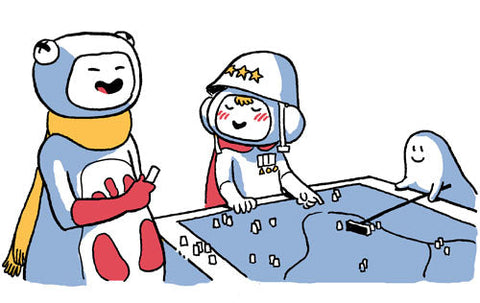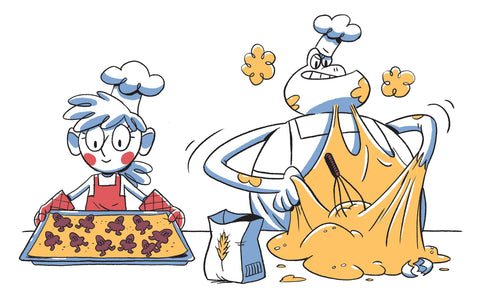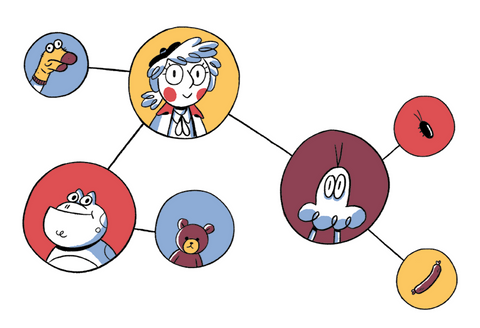ℹ️ Skip to key parts of the session by clicking on the chapter dots along the timeline.
Tom Kerwin is the author of the upcoming Innovation Tactics Pip Deck.
In this session, Tom guided us through the building and understanding of the Cynefin framework basics. We captured examples of decisions and changes in our lives and then mapped them out using the framework. Thanks, Tom!
👉 View the Miro board for this session
What is the Cynefin framework and why should we use it?
You may have heard of Cynefin, Dave Snowden's framework for understanding order, complexity and chaos. It's recently been featured in an EU fieldbook for managing crisis. And what is product work if not managing a constant crisis?
We tend to treat our work in product design, business and strategy as complicated problems that are linear with a straightforward cause and effect link.
The Cynefin framework gives you the information that helps you accurately assess your situation before coming up with an appropriate response.
How to create a Cynefin Diagram
Tip: you can create a physical Cynefin diagram or digitally on Miro.
Step 1: working individually, write down (on sticky notes) some recent UX/design decisions you have made within a 1-3 minute timeframe. You can write as many of these as you like, but make sure you write 1 idea per sticky note.
Should we write down what the decision was or what the decision was about?
Either is fine at this stage.
Step 2: Now write down decisions that you have made in a 1-3 hour timeframe.
Do we need to make the hours on the sticky notes?
No, it’s fine because when we arrange them, it won’t be according to timeframes. The timescales are just prompting us to think of different decisions and ideas.
Step 3: Write down decisions you have made that includes an artefact. E.g. a service map/spreadsheet etc.
Step 4: now write decisions you have made based on skills. A ‘skill’ refers to something you can measure on a person to see if they have it and can do it quickly to the best quality.
E.g. plastering is a skill – someone with skills in plastering would be able to complete a task perfectly and in a short amount of time.
Step 5: write down decisions you have made in regards to heuristics/habits around your product.
Step 6: start writing decisions that you have made within a 1-3 week timeframe.
Tip: as you write your post-it’s try and keep them as neat as possible. This might help at a later stage.
Step 7: now write decisions that you have made within a 1-3 month timeframe.
Step 8: take a look at all of the stick notes you have written and choose 1 that is a perfect exemplar for each of the following points:
- A decision where we could definitely determine the right answer
- This one should be simple. For example, if it was dark and you wanted it to be light, your decision would be to turn the light on. That will always be the correct decision.
- A decision where we would know the right answer with hindsight
- A decision where the outcome doesn’t matter as long as a decision was made
Drag or place these sticky notes in a new area of your workspace and sort them into the following groups:
- Upfront
- Hindsight
- Doesn’t Matter
Whilst doing this exercise you will find a lot of the decisions that you have written down will be sat in-between the exemplars.
Step 9: Bring your focus on the Upfront group and discuss the decisions that should be exemplars of a decision where we could determine the right answer.
In our session, we discussed the following decisions:
“Shuffle the deck of artefact cards” – artefact cards are a physical deck of cards that can be used in sessions to build bigger ideas. To get the best out of these cards, they sometimes need to be shuffled. So we would know upfront that shuffling the cards is a good decision.
“Responding to an email” – this is a simple and upfront decision. The response could be a direct reply, ignoring the email, deleting the email or picking up the phone.
The idea of the upfront decisions is that you can analyse the situation and choose a decision and know upfront that that is the best course of action. You won’t look back in 2 months’ time and think, ‘I wish I did something different.'
Step 10: Now, focus on the ‘Doesn’t Matter’ group of exemplars.
It is stepping away from rights and wrongs and thinking that any option will be ok and has to be made.
E.g. “Using Miro or Trello to organise ourselves” – this is a perfect exemplar of a decision that doesn’t matter because most of these tools have the same features. The most important thing is that you are making the decision to get organised.
“Choosing a cloud provider” – this is another good exemplar that follows the same reasoning as the Miro/Trello example. It doesn’t matter who the supplier is as long as you get a cloud provider.
Step 11: Finally, bring your focus to the Hindsight group of exemplars.
A couple of exemplars we discussed were:
“Stopping what you’re doing” – wouldn’t know if this was the right thing to do unless you do it or didn’t do it.
“Growing the team” – you’d only know if this was a good decision when you add another person to your team.
Hindsight might be the easiest group to put things into.
Step 12: Once you have chosen the best exemplar in each group, drag or put these in 3 separate corners of a triangle on your workspace. You should put these far away from each other as you will be plotting the rest of your exemplars in-between them.
Step 13: the next step is to re-arranging your post-its according to how much they match the exemplars. Start with one at random to begin with and then as soon as you are comfortable with the process you can start sorting these quicker.
Tip: time-block this part to ensure that you can take great consideration to where these are going to sit between all 3 exemplars.
Step 14: Pink ribbon (or pink pen on Miro!)
Start with the Upfront section of the triangle. Draw a boundary around the ‘Upfront’ sticky notes where they change meaningfully from the upfront decisions you know are correct to hindsight/doesn’t matter.
Repeat this process for the other 2 sections/corners of the board (Hindsight/Doesn’t Matter).
Tip: when drawing your ribbon, you will find that some of your sticky notes will be left out of the boundaries, so don’t worry about these ones.
How to make sense of your Cynefin Diagram
We’ve looked at these decisions and concluded that not all of our decisions are alike and all fall in a different spectre. Bringing it back to Cynefin, what we have done is identified 3 different systems: ordered, complex and chaotic (a bit like matter, we have solid, liquid & gas with a triple point in the middle).
Upfront decisions: Ordered Domain/System
Decisions with a linear cause and effect. If we do ‘A’ then ‘B’ would be our result.
Analyse > decide > act
Hindsight decisions: Complex Domain/System
No amount of analysis will tell you what the right answer is going to be. It prompts you to try something and sense what happens and respond to that.
Probe > sense > respond
Doesn’t Matter: Chaotic Domain/System
Where stuff has gone wrong or you can spend hours arguing about a decision. There is no right answer or no way of analysing to get the right answer. A decision needs to be made quickly otherwise you will be stuck in chaos.
E.g. when you fall into a state of chaos, it’s most important to take action.
The triple point in the middle: Aporia – these are our sticky notes that are left out of the boundaries and can go in any direction.
What would be the next steps from here?
Deconstruct the decisions into parts and then discuss/analyse whether they have been put into the correct domains. Or reframe the decisions into a way they can fit in the domains comfortably.
Is Cynefin a tool you would use with stakeholders? Or something you would use solo?
A bit of both. It’s a useful way to decide or understand how to act dependant on which domain the decision is in. You can easily highlight that there is no set way of working.
Tom Kerwin is the author of the upcoming Innovation Tactics Pip Deck.









